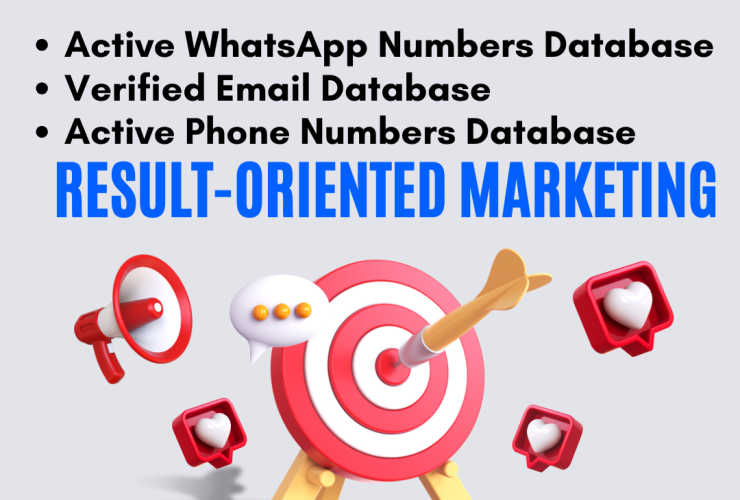How To Craft The Perfect Email For Your Business
Crafting the perfect business email is crucial for effective communication and engagement. Whether you’re reaching out to potential clients, nurturing leads, or updating current customers, a well-crafted email can significantly impact your business outcomes. Here’s a comprehensive guide to help you create emails that capture attention, drive action, and enhance your professional image.
1. Define Your Purpose
Before drafting your email, clearly define its purpose. Are you introducing your business, promoting a new product, requesting a meeting, or following up on a previous conversation? Understanding the core objective will guide your message and help you stay focused.
2. Craft an Attention-Grabbing Subject Line
The subject line is the first thing your recipients see and plays a crucial role in determining whether your email gets opened. To create an effective subject line:
Be Clear and Concise: Aim for brevity while clearly conveying the email’s purpose. Avoid jargon and ensure the subject line aligns with the email’s content.
Create Urgency or Curiosity: Use phrases that incite curiosity or urgency, but avoid misleading claims. For example, “Exclusive Offer Ends Tonight” or “Discover How to Save 30%.”
Personalize When Possible: Including the recipient’s name or company can make the email feel more tailored and relevant.
3. Start with a Strong Opening
The opening of your email sets the tone and determines whether the recipient will continue reading.
Greet the Recipient Professionally: Use a courteous and appropriate salutation, such as “Dear [Name]” or “Hello [Name].” Avoid overly casual greetings unless your brand voice allows it.
Introduce Yourself and Your Purpose: Briefly introduce yourself or your company and clearly state the purpose of your email. This helps the recipient understand the context and importance of the message.
4. Write a Compelling Body
The body of your email is where you deliver your main message. To ensure clarity and engagement:
Be Direct and Concise: Avoid long-winded explanations. Present your information in a straightforward manner, focusing on key points.
Use Bullet Points or Subheadings: Break up text with bullet points or subheadings to make it easier to scan and digest.
Include a Call to Action (CTA): Clearly state what you want the recipient to do next, whether it’s scheduling a call, clicking a link, or replying to the email. Use actionable language, such as “Click Here to Learn More” or “Reply to Schedule a Meeting.”
5. Maintain Professional Tone and Language.
Your email should reflect your brand’s professionalism.
Avoid Slang and Informal Language: Use formal and respectful language. Ensure that your tone matches the nature of your business and the recipient.
Proofread for Errors: Spelling and grammatical errors can undermine your credibility. Always proofread your email before sending it, or use tools to check for mistakes.
6. Optimize for Mobile Devices
With many people accessing emails on mobile devices, ensure your email is mobile-friendly:
Use a Responsive Design: Employ a responsive email template that adjusts to different screen sizes.
Keep Formatting Simple: Avoid complex layouts and excessive images that might not render well on mobile devices. Use a single-column layout and large, easy-to-click buttons.
7. Personalize and Segment
Personalization can significantly enhance engagement:
Use Personal Data Wisely: Include relevant details about the recipient, such as their name, company, or recent interactions with your business.
Segment Your Audience: Tailor your emails based on the recipient’s behavior or preferences. Segmenting your list helps ensure that your emails are relevant to the recipient, increasing the likelihood of a positive response.
8. Include a Professional Signature
Your email signature provides additional contact information and reinforces your professional identity:
Add Relevant Details: Include your name, job title, company, and contact information. Optionally, you can add a link to your LinkedIn profile or company website.
Keep It Simple: Ensure that your signature is clean and not overloaded with unnecessary details or promotional links.
9. Test and Analyze
Before sending out your email to a large list, test it to see how it performs:
Send Test Emails: Send test versions to yourself or a colleague to check formatting, links, and overall appearance.
Analyze Metrics: After sending, analyze open rates, click-through rates, and responses to gauge effectiveness. Use this data to refine future emails.
Crafting the perfect business email involves a clear purpose, engaging content, and a professional approach. By focusing on a compelling subject line, a strong opening, concise body text, and effective CTAs, you can create emails that capture attention and drive results. Personalizing your messages, optimizing for mobile, and maintaining professionalism will further enhance your communication. Regular testing and analysis will help you continuously improve your email strategy, ensuring that your business emails consistently achieve their intended goals.



